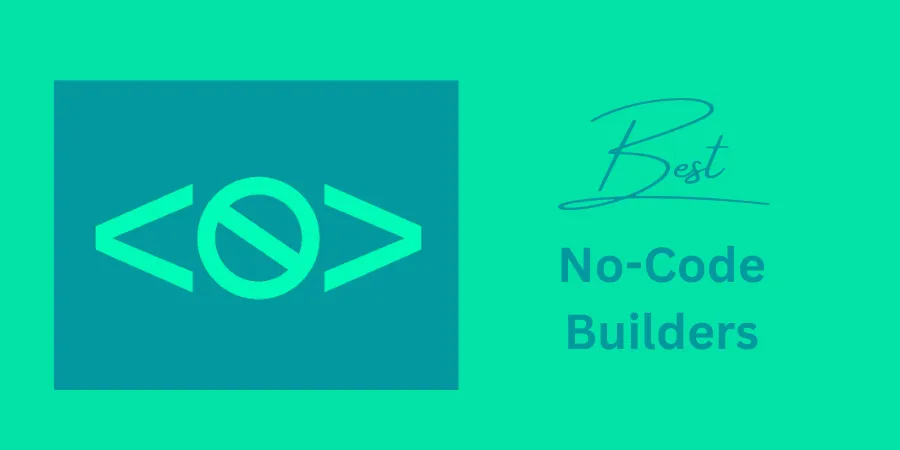6 Best No-Code Builders [Reviewed and Ranked]
No-code app builders are software tools that allow individuals or businesses to create custom mobile or web applications without the need for coding knowledge.
These platforms are user-friendly and can be used by anyone, regardless of their technical skills.
They provide a simple drag-and-drop interface for building apps, which means that users can easily design and customize their own applications without having to write a single line of code.
No-code app builders have become increasingly popular in recent years due to the growing demand for custom app development.
They provide a quick and cost-effective solution for businesses that want to create their own applications without hiring a team of developers.
In this guide, we will review some of the best no-code app builders on the market and discuss their benefits, pros and cons, and how to get started with them.
What Is The Best No-Code Builder?
Here are my top picks of the best no-code builders.
1. Appy Pie
Appy Pie is a popular no-code app builder that allows users to create custom mobile and web apps without any coding knowledge.
It has a user-friendly drag-and-drop interface and a wide range of features and templates to choose from.
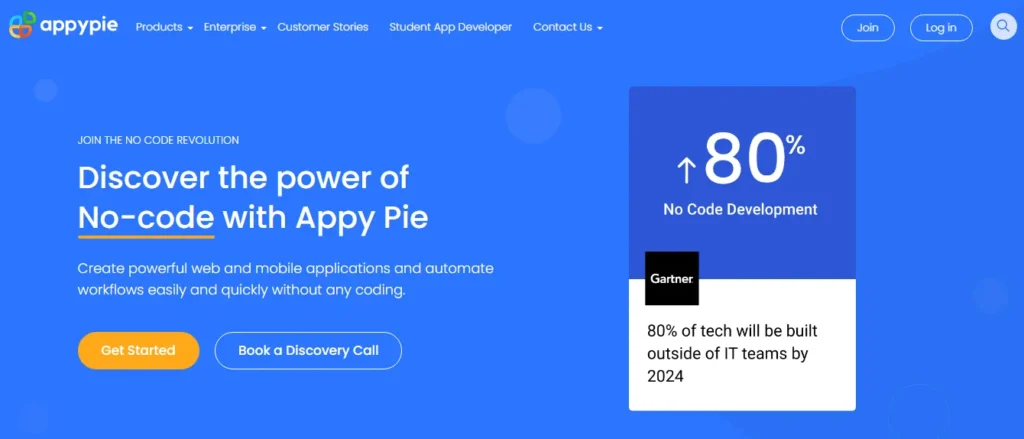
Some of the benefits of using Appy Pie include the ability to publish apps to the App Store and Google Play, integration with popular tools and platforms, and a variety of monetization options.
Pros
- Easy to use.
- Wide range of features and templates.
- Integration with popular tools and platforms.
Cons
- Limited customization options.
- Limited support for Android devices.
How to get started
To get started with Appy Pie, simply sign up for an account and choose a plan that fits your needs. From there, you can use the drag-and-drop interface to design and customize your app.
Appy Pie also offers a variety of tutorials and resources to help users get started.
2. Bubble
Bubble is a powerful no-code app builder that allows users to create custom web applications without writing any code.
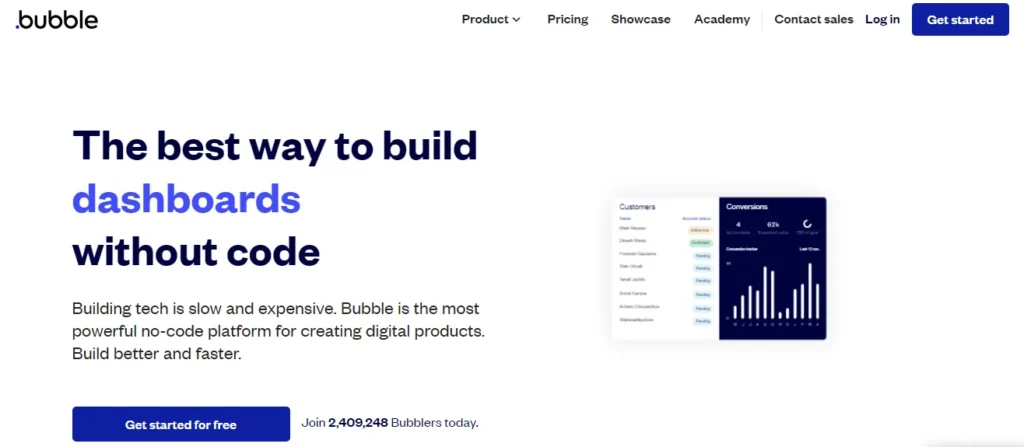
It has a user-friendly interface and a wide range of features, including the ability to integrate with popular tools and platforms, create custom workflows, and build advanced features such as chatbots and e-commerce capabilities.
Pros
- Wide range of features.
- Advanced capabilities such as chatbots and e-commerce.
- Integration with popular tools and platforms.
Cons
- Complex learning curve.
- Limited customization options for certain elements.
How to get started
To get started with Bubble, sign up for an account and choose a plan that fits your needs.
From there, you can use the drag-and-drop interface to design and customize your app.
Bubble also offers a variety of tutorials and resources to help users get started, as well as a community forum where you can ask questions and get help from other users.
3. Adalo
Adalo is a no-code app builder that allows users to create custom mobile and web applications without any coding knowledge.
It has a user-friendly interface and a wide range of features and templates to choose from.
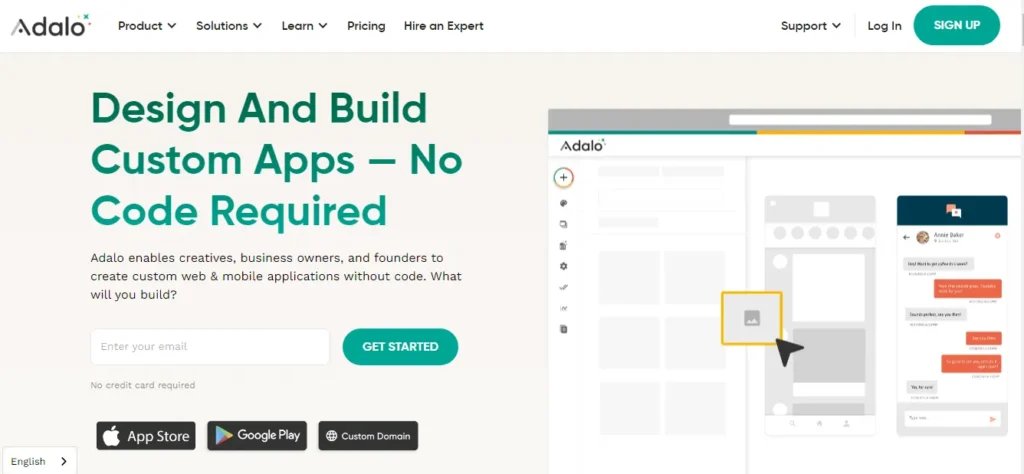
Some of the benefits of using Adalo include the ability to publish apps to the App Store and Google Play, integration with popular tools and platforms, and a variety of monetization options.
Pros
- Easy to use.
- Wide range of features and templates.
- Integration with popular tools and platforms.
Cons
- Limited customization options for certain elements.
- Limited support for Android devices.
How to get started
To get started with Adalo, sign up for an account and choose a plan that fits your needs. From there, you can use the drag-and-drop interface to design and customize your app.
Adalo also offers a variety of tutorials and resources to help users get started, as well as a community forum where you can ask questions and get help from other users.
4. Glide
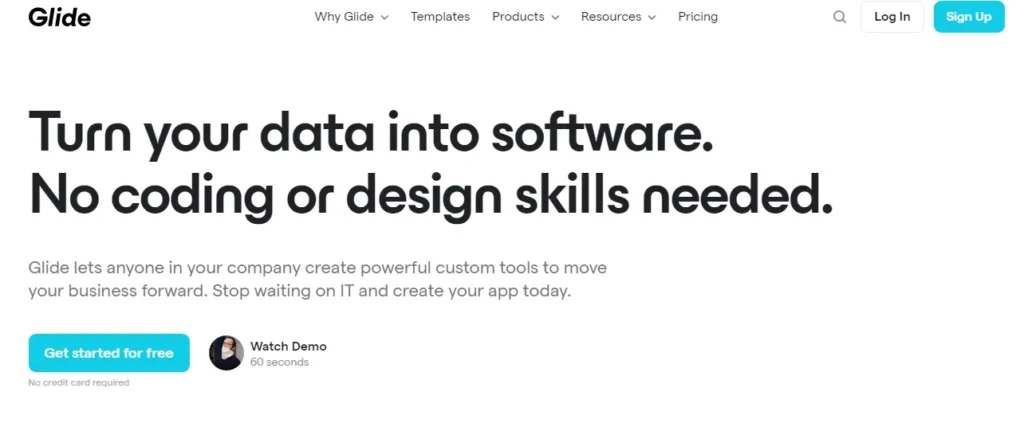
Glide is a no-code app builder that allows users to create custom mobile and web applications without any coding knowledge.
It has a user-friendly interface and a wide range of features and templates to choose from.
Some of the benefits of using Glide include the ability to publish apps to the App Store and Google Play, integration with popular tools and platforms, and a variety of monetization options.
Pros
- Easy to use.
- Wide range of features and templates.
- Integration with popular tools and platforms.
Cons
- Limited customization options for certain elements.
- Limited support for Android devices.
How to get started
To get started with Glide, sign up for an account and choose a plan that fits your needs. From there, you can use the drag-and-drop interface to design and customize your app.
Glide also offers a variety of tutorials and resources to help users get started, as well as a community forum where you can ask questions and get help from other users.
5. DraftBit
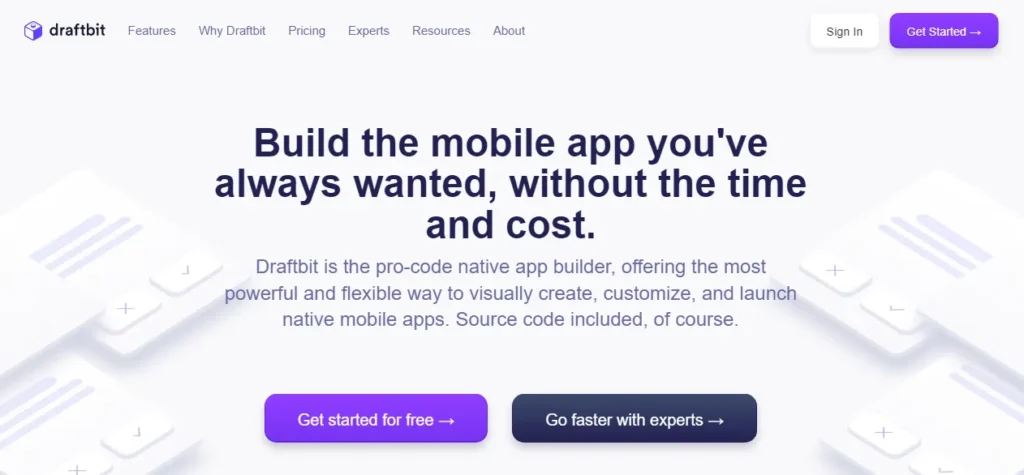
DraftBit is a no-code app builder that allows users to create custom mobile and web applications without any coding knowledge.
It has a user-friendly interface and a wide range of templates and design elements to choose from.
Some of the benefits of using DraftBit include the ability to publish apps to the App Store and Google Play, integration with popular tools and platforms, and a variety of monetization options.
Pros
- Easy to use.
- Wide range of templates and design elements.
- Integration with popular tools and platforms.
Cons
- Limited customization options for certain elements.
- Limited support for Android devices.
How to get started
To get started with DraftBit, sign up for an account and choose a plan that fits your needs. From there, you can use the drag-and-drop interface to design and customize your app.
DraftBit also offers a variety of tutorials and resources to help users get started, as well as a community forum where you can ask questions and get help from other users.
6. Apphive

Apphive is a no-code app builder that allows users to create custom mobile and web applications without any coding knowledge.
It has a user-friendly interface and a wide range of templates and design elements to choose from.
Some of the benefits of using Apphive include the ability to publish apps to the App Store and Google Play, integration with popular tools and platforms, and a variety of monetization options.
Pros
- Easy to use.
- Wide range of templates and design elements.
- Integration with popular tools and platforms.
Cons
- Limited customization options for certain elements.
- Limited support for Android devices.
How to get started
To get started with Apphive, sign up for an account and choose a plan that fits your needs. From there, you can use the drag-and-drop interface to design and customize your app. Apphive also offers a variety of tutorials and resources to help users get started, as well as a community forum where you can ask questions and get help from other users.
Benefits of using no-code app builders
Time and cost-effective
No-code unlike code, app builders can significantly reduce the time and cost required to develop a custom app. With a no-code platform, you can create an app in a fraction of the time and cost it would take to hire a team of developers.
User-friendly
No-code app builders are designed to be user-friendly, even for those with no coding experience. They provide a simple drag-and-drop interface for building apps, which means that users can easily design and customize their own applications.
Customization
No-code app builders allow users to fully customize their app according to their specific needs. This includes the ability to add features, design the layout, and integrate with other tools and platforms.
Collaboration
No-code app builders often include features for team collaboration, which means that multiple users can work on the same app at the same time. This can be especially useful for businesses that want to involve different departments or stakeholders in the app development process.
Regular updates
No-code app builders are constantly updating and improving their platforms, which means that users can take advantage of the latest features and tools.
Frequently asked questions about no-code app builders
No-code app builders can be suitable for professional app development, depending on the complexity of the app and the specific needs of the business. While they may not offer the same level of customization and advanced features as traditional app development platforms, they can still be a cost-effective and time-efficient solution for creating custom apps.
Yes, many no-code app builders allow users to publish their apps to the App Store and Google Play. This typically requires the user to have a developer account with the respective platform and to follow the platform’s guidelines for app submission.
Yes, many no-code app builders allow users to integrate their apps with other tools and platforms. This can include things like payment gateways, email marketing tools, and social media platforms.
Yes, it is possible to monetize your app with a no-code app builder. Many no-code platforms offer a variety of monetization options, such as in-app purchases, subscriptions, and advertising. It is important to carefully consider which monetization strategy is best for your app and your target audience.
Conclusion
No-code app builders provide a quick and cost-effective solution for businesses and individuals looking to create custom mobile or web applications without coding knowledge.
They offer a user-friendly drag-and-drop interface, a wide range of features and templates, and the ability to publish apps to the App Store and Google Play.
Some of the best no-code app builders include Appy Pie, Bubble, Adalo, and Glide. Each platform has its own set of benefits and drawbacks, and it is important to carefully consider which one is the best fit for your needs.
No-code app builders can be a great way to bring your app ideas to life, so don’t be afraid to give them a try!

